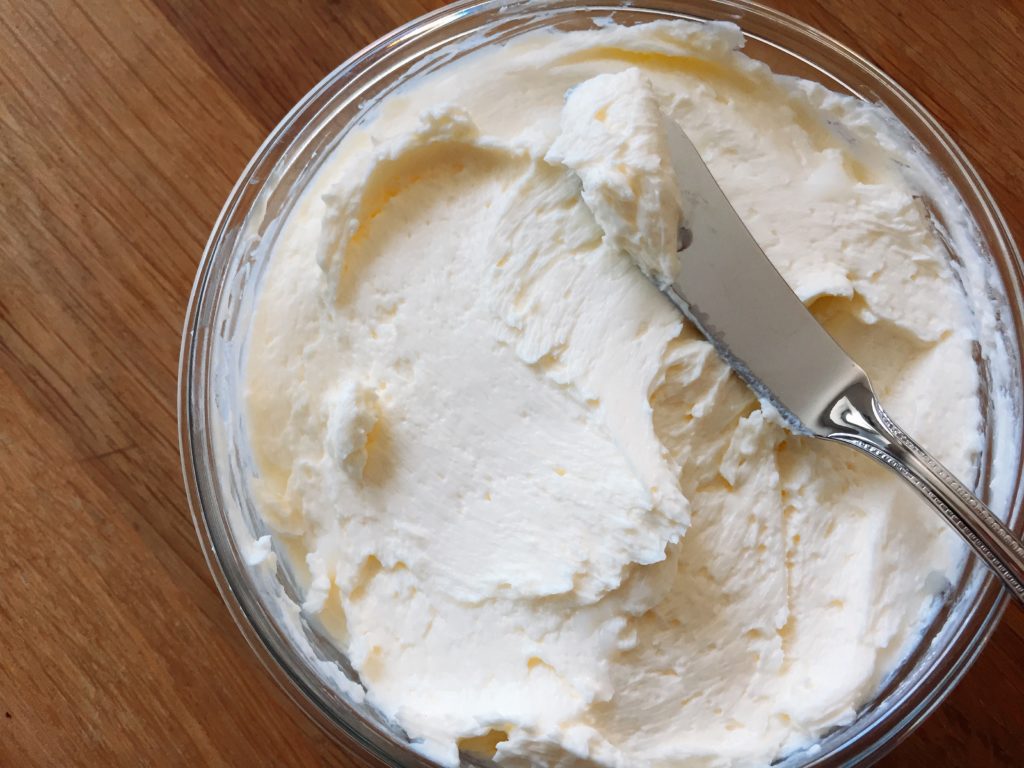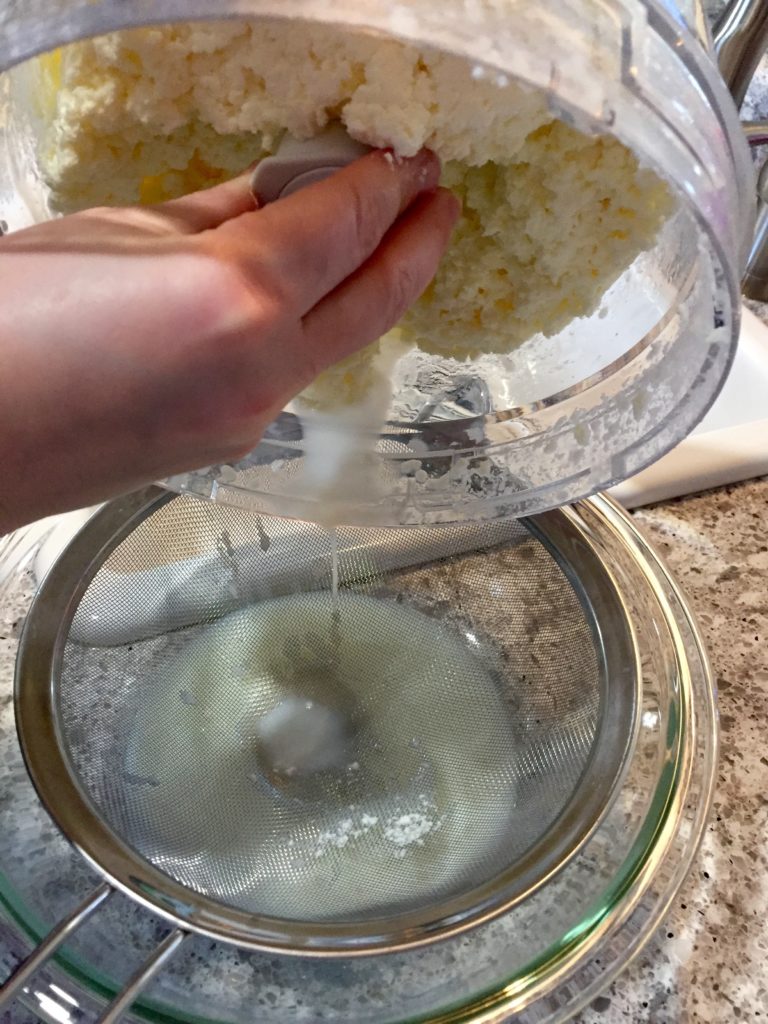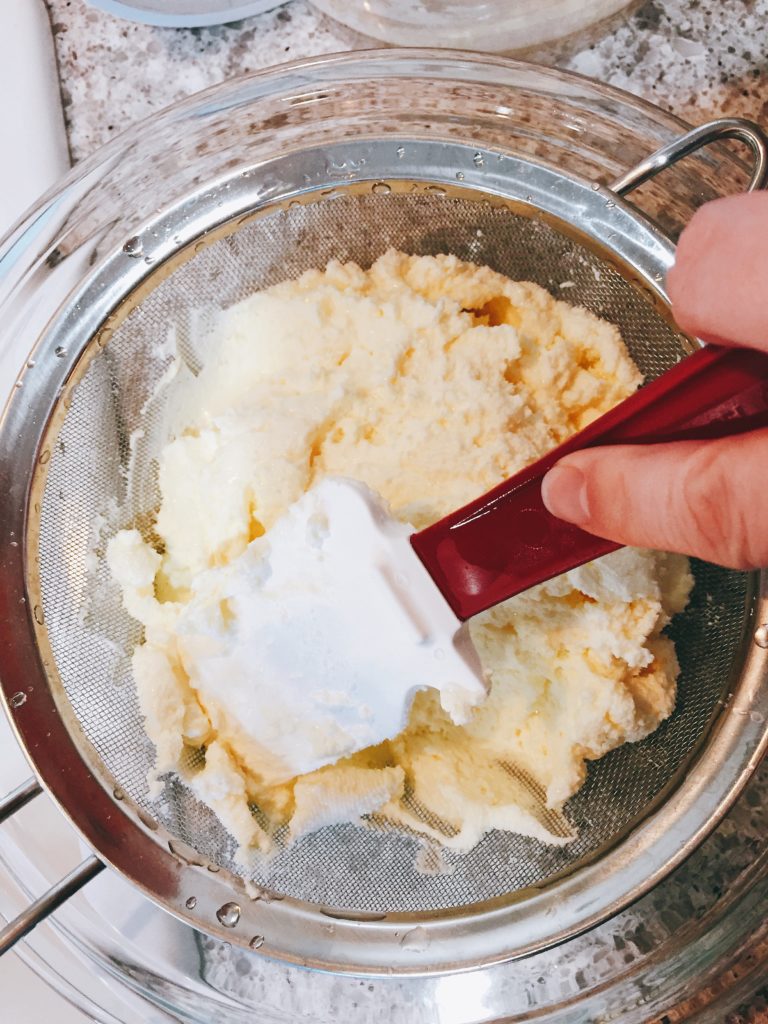 Did you hear? Butter is the new health craze. Butter is back, baby. Fats and oils are no longer at the tippy top of the food pyramid. Throw away that tub of gross imitation butter. Bring on the real stuff.
Did you hear? Butter is the new health craze. Butter is back, baby. Fats and oils are no longer at the tippy top of the food pyramid. Throw away that tub of gross imitation butter. Bring on the real stuff.
This is great news for me: I reserve a whole separate food group just for butter. Whether it’s peanut butter, almond butter or real actual no kidding fatty dairy butter … I love it all. And I just found out that coffee and chocolate butters exist out in the world. The future is today my fellow eaters.
But let’s forget about the future of butter for now and focus on the basics. I decided to try my hand at making my own. It sounded pretty daunting and tiring. All I knew of butter making are the antique butter churns (or check out this modern hipster version). The upside to this method would be some really buff arms. Get ready for the next fitness craze …
Or not. With modern tools in our kitchens this is not going to happen, because it turns out making your own is extremely easy. I found several methods to make it using everything from a simple mason jar to a blender. After reading through several articles and blogs, I decided to use my food processor. Not only is it the fastest, but it’s a good excuse to use it. The poor guy sits all the way up high in my cabinet where even my 6′ 2″ tall husband can’t reach it. I like to throw it some love every now and then.
 The hardest and most import step may be finding a good quality cream to start with. Most grocery stores sell an organic heavy cream. But if you’re looking for no hormones, no antibiotics, grass-fed or raw you may have to dig a bit deeper. You can, of course, use any heavy cream to make butter. But you’ll get a better taste from grass-fed or raw milk. If you have a local dairy or a farmer’s market with a dairy seller, chances are you’ll get a great tasting, sweeter, richer cream. The taste of grass-fed milk even changes with the season since the cows eat more hay in winter and, as spring approaches, the greens they eat alter their milk’s chemistry. It makes sense and is one of those facts that makes my nerdy food side really geek out.
The hardest and most import step may be finding a good quality cream to start with. Most grocery stores sell an organic heavy cream. But if you’re looking for no hormones, no antibiotics, grass-fed or raw you may have to dig a bit deeper. You can, of course, use any heavy cream to make butter. But you’ll get a better taste from grass-fed or raw milk. If you have a local dairy or a farmer’s market with a dairy seller, chances are you’ll get a great tasting, sweeter, richer cream. The taste of grass-fed milk even changes with the season since the cows eat more hay in winter and, as spring approaches, the greens they eat alter their milk’s chemistry. It makes sense and is one of those facts that makes my nerdy food side really geek out.
If you can go the raw route, which is harder for some due to state level regulations on selling unpasteurized milk, you’ll get something really special. Living in Virginia I can only get raw milk if I own the cow. Ain’t no way, no how is my little townhouse community going to let that happen (along with city ordinances, my tiny backyard, the HOA, etc), so farmers have devised a clever way to get around the law: cow shares. You can buy into a portion of a cow, which entitles you to a share of the raw milk they produce. The cool thing about raw milk is the cream that settles at the top. Normally you would shake your milk to mix that in before pouring. When making butter, this is the cream you skim off to start with.
OK, so we’ve established the ingredients (make that ingredient) is really simple. So what’s the process?
Whether or not you are using a food processor, the steps are pretty much the same, it just may take longer with other methods. First, you want to start with room temperature heavy cream. Take it out of the fridge and let it warm up a bit, for about an hour. This will help the fluffy curds form better and faster.
 When ready, pour the cream into the food processor making sure not to overfill. I used two pints, or 1 quart, of heavy cream. Attach the lid firmly and let ‘er rip. It only takes about 5 minutes or less to change it into butter.
When ready, pour the cream into the food processor making sure not to overfill. I used two pints, or 1 quart, of heavy cream. Attach the lid firmly and let ‘er rip. It only takes about 5 minutes or less to change it into butter.
As the processor runs and agitates the cream, you will notice some changes. It will slowly thicken up, essentially turning into whipped cream. As it continues to process, it will break and milk solids which look like fluffy, pail yellow clouds will begin to emerge in the liquid.
Put a fine mesh sieve over a bowl and pour the contents of the processor over it. The liquid left after the milk breaks is buttermilk. Save this off for other uses! The butter is what stays in the sieve.
The step I was most confused about was the “washing” stage. Why on earth do I have to rinse my butter, I thought. Well, you don’t have to, but if you want it to last a little longer it’s suggested that you either soak it in a little water or run the butter right under a sink. This was relatively easy and painless, I just didn’t understand why.
After rinsing, using either your hands, spoon or spatula, kneed or squeeze the butter to remove any excess liquid left behind. This part can take a little time. You want to make sure you get most of what you can out. Setting it in a sieve to drain works too.
Congratulations eater! You just made butter! At this point you can salt it if you’d like and place into a container of your choice. Later this month we talk about what you can do with this butter – besides the obvious bread, baking, potatoes – like making seasoned compound butter for cooking or browning it for a sauce.




[…] now that you know how to make your own butter after reading last week’s post, why on earth would you stop […]